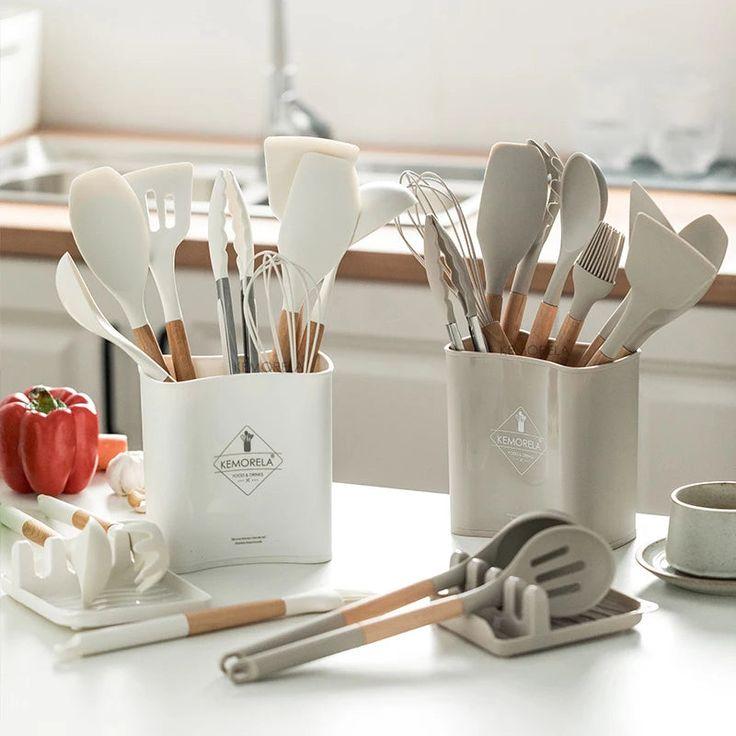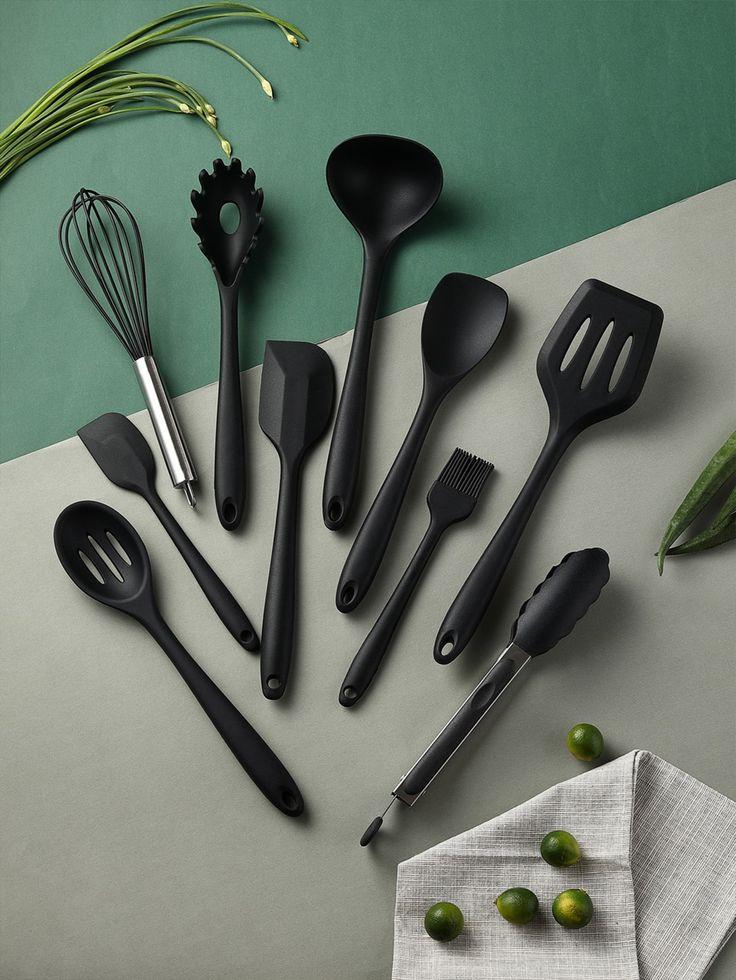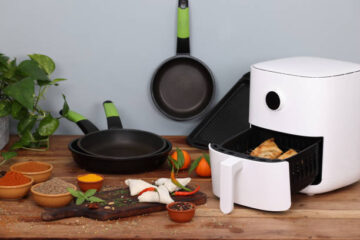Deciding when to replace silicon kitchen utensils set, can be challenging. Kitchen tools, regardless of whether they are crafted from silicone, wood, or metal, have a finite lifespan. Knowing when to replace them and understanding how to care for them properly can significantly impact their durability and safety. In this blog, we’ll provide guidance on determining the right time for replacement and offer insights into proper maintenance to extend the life of your utensils.
Understanding Silicone
To appreciate the durability and versatility of silicone kitchen utensils set, it’s helpful to understand the material’s composition. Silicone is derived from silicon, a semi-metallic element that combines with oxygen to form silicon dioxide, commonly known as silica. This chemical process, as explained by the Institute of Medicine, results in silicone existing in various forms such as liquid, gel, or rubbery substances.
Silicone is also derived from hydrocarbons, which are sourced from petroleum, a fossil fuel. The combustion of petroleum releases harmful pollutants, including carbon dioxide, a significant greenhouse gas. Despite its petrochemical origins, silicone is prized for its resilience and flexibility, making it a popular choice for kitchen utensils.
When to Replace Silicone Kitchen Utensils

Determining when to replace silicone kitchen utensils involves recognizing several key signs of wear and tear:
- Changes in Color: Discoloration is often an indicator of degradation. If your silicone utensils are showing signs of fading, dark spots, or other color changes, it might be time for a replacement. Discoloration can be a sign that the silicone has been compromised and may no longer be safe for food contact.
- Dissolution of Parts: Exposure to high temperatures can cause silicone to deteriorate. If you notice signs of melting, crumbling, or any other physical breakdown, the utensil should be discarded immediately. Such damage can affect the utensil’s functionality and safety.
- Twisted Shapes and White Streaks: These issues suggest an excess of fillers in the silicone, which can reduce its quality. If you see twisted shapes or white streaks, the quality of the silicone may be compromised, making it unsuitable for cooking.
- Frequent Use by Children: Silicone utensils used frequently by children may require more frequent replacement due to potential prolonged exposure to food residues. Mold growth can be a concern, as certain bacterial species can form biofilms on silicone surfaces, posing health risks.
- Exposure to Sunlight or Machine Washing: Both direct sunlight and machine washing can compromise the integrity of silicone utensils. Handwashing is generally recommended to extend the lifespan of silicone kitchen tools. Sunlight can degrade silicone over time, causing it to become brittle or discolored.
The Risks of Not Replacing Worn-Out Silicone Utensils
Failing to replace silicone utensils that have reached the end of their lifespan can pose several risks:
- Health Risks from Mold and Bacteria: Over time, worn-out silicone utensils can harbor mold and bacteria, especially if they have cracks or porous surfaces. This can lead to foodborne illnesses. Children, in particular, may be at risk as they might not notice these issues and could continue using contaminated utensils, leading to stomach aches, food poisoning, or more severe health problems.
- Chemical Leaching: Degraded silicone can potentially leach harmful chemicals into food, especially when exposed to high temperatures. Over time, these chemicals can accumulate in the body, leading to potential health issues. For a parent preparing meals for a family, this poses significant risks.
- Accidents Due to Structural Weakness: Worn-out utensils might break or lose their integrity during use. For instance, a spatula might snap while flipping food, leading to burns or spills. Students or inexperienced cooks might not know how to handle such situations safely, increasing the risk of kitchen accidents.
Maintaining High-Quality Silicone Kitchen Utensils
Proper care is crucial for maintaining the quality and longevity of silicone kitchen utensils. Here are some tips to keep your silicone utensils in optimal condition:
- Handwashing: Always handwash your silicone utensils to avoid damage from the dishwasher’s high temperatures and harsh detergents. Dishwashers can cause the silicone to deteriorate more quickly.
- Proper Storage: Store utensils in a cool, dry place to prevent warping or discoloration. Avoid storing them in areas where they may be exposed to excessive heat or humidity.
- Avoid Direct Sunlight: Prolonged exposure to sunlight can degrade silicone, causing it to become brittle or discolored. Store utensils away from direct sunlight to maintain their quality.
- Thorough Cleaning: Clean utensils thoroughly after each use to prevent food residue build-up, which can lead to mold growth. Ensure they are completely dry before storage to avoid any moisture-related issues.
While silicone kitchen utensils set are generally durable and can last for years with proper care, the quality of the silicone plays a crucial role in their longevity. Investing in high-quality silicone utensils ensures better performance and a longer lifespan. Low-quality silicone may break down over time, potentially leading to small particles ending up in your food.

Discovering Top Picks
If you’re considering upgrading your kitchen utensils, our upcoming blog post, “Silicone Kitchen Utensils Set: Top Picks for UK Kitchens,” will provide valuable insights. We will highlight some of the best options available, helping you make an informed decision. Dr. Cooker’s product page offers a variety of high-quality silicone kitchen utensils that you may consider as replacements for your old cutlery.
Conclusion
Silicone kitchen utensils are known for their durability and flexibility, but they are not immune to wear and tear. By understanding the signs of degradation and following proper care practices, you can extend the lifespan of your utensils and ensure they remain safe for use. When it’s time for replacement, investing in high-quality options will provide better performance and longevity. Neglecting to replace worn-out utensils can pose significant health risks, especially for children and those who may not be as diligent about kitchen hygiene. Ensuring your utensils are in good condition is essential for the health and safety of your family.


